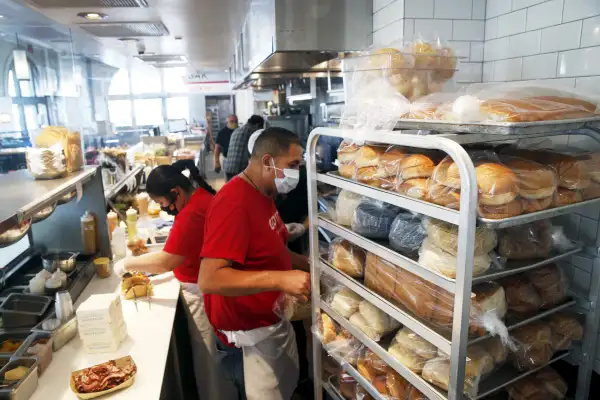Can Small Businesses Still Apply for PPP Loans? Yes — but Not for Long

Note: On Saturday, July 4, President Donald Trump signed an extension to keep the PPP application period open until Aug. 8. It had previously closed June 30.
The clock is ticking for small business owners who need financial help in order to survive the coronavirus crisis.
Saturday, Aug. 8 is now the application deadline for the Paycheck Protection Program, a CARES Act initiative that provides loans to businesses that agree to keep employees on payroll — even if the pandemic prevents them from coming into work.
Nicknamed PPP, the loans are forgivable if qualified borrowers use the money for certain purposes, including payroll, rent, mortgage payments, interest and utilities. (If they don't, and headcount, wages or salaries decrease, the level of forgiveness goes down.)
The PPP's rollout was chaotic, and while some recent changes to the program have made loan forgiveness more lenient, the Treasury Department and Small Business Administration (SBA) have confirmed the impending deadline in no uncertain terms.
If you haven't gotten a PPP loan yet, time to do so is running out. Here's what you need to know.
Does the PPP still have money to give out?
Yes.
The program was initially funded at $349 billion when the CARES Act passed in March. But it ran out of money after applications opened. Lawmakers added an extra $320 billion in a bill signed by President Donald Trump on April 24, bringing the total amount of available PPP funding up to $669 billion.
As of June 20, about $515 billion of that money has been spoken for. Some 5,500 lenders have approved nearly 4.7 million borrowers, giving them an average loan of about $110,000.
There's about $128 billion of PPP funding left, a figure that takes into account program costs and "approvals net of cancellations as well as loan increases, decreases, and reinstatements," according to the SBA.
Can I still find a PPP lender?
Yes. In fact, the SBA recently released a free online tool for this exact purpose.
Lender Match connects small businesses and nonprofits to small lenders and Community Development Financial Institutions. (It can also direct you to updates on microloans, Community Advantage, 7(a) and 504 loans.)
Once you enter your information into Lender Match, you'll get emailed lender options within two business days. You can compare their terms, rates and fees; if you find something you like, you can start an application. Signing up for Lender Match isn't a guarantee you'll get a loan, but it may be a good way to see what's out there.
What about the Paycheck Protection Program Flexibility Act?
Trump made some tweaks to the PPP with the Payroll Protection Program Flexibility Act of 2020. Signed on June 5, the law is intended to give borrowers more leeway in attempting to get forgiveness.
Among other updates, it extended the loan forgiveness covered period from eight to 24 weeks. It also loosened restrictions on the portion of loan proceeds that have to be used for payroll costs in order to get that full forgiveness, dropping from 75% to 60%. The maturity of PPP loans approved by SBA went from two years to five years.
You can read more detailed guidance from the SBA here.
Is EIDL still available?
Yes.
The SBA is also offering Economic Injury Disaster Loans, which come with a low interest rate and have fewer restrictions on how the money can be spent. EIDL can be used to pay "debts, payroll, accounts payable and other bills that can't be paid because of the disaster’s impact," according to a news release. A business can get both EIDL and PPP, but it can't use the funds for the same purpose.
EIDL has been an attractive option for entrepreneurs because they can also request a loan advance of up to $10,000, or $1,000 per employee, that does not have to be repaid. (Businesses can also get an advance even if they're denied for a loan.)
Much like the PPP, the EIDL program had a rocky launch and briefly limited what kinds of businesses could apply. But as of June 15, it is accepting new EIDL applications from all types of small businesses. The SBA has approved $113 billion in EIDL loans so far.
The deadline to apply for EIDL isn't until the end of the year. So unlike with the PPP, you've got time.
More from Money:
For Small Businesses, Getting a PPP Loan Is Hard. Using It Is Even Trickier
Here's a State-by-State Breakdown of PPP Funding — and How Far It Went
